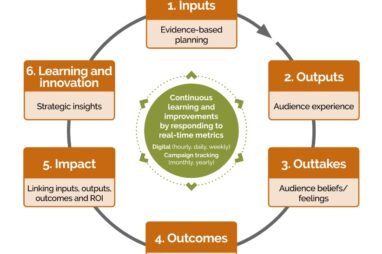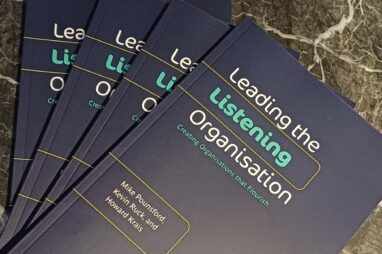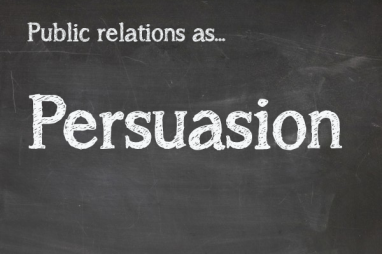The public relations perspective

About the author
Richard Bailey Hon FCIPR is editor of PR Academy's PR Place Insights. He teaches and assesses undergraduate, postgraduate and professional students.

Perspective matters. Practitioners understand this instinctively, but learners struggle to see that a report written about an organisation would be very different from a report written for the same organisation.
So where does public relations or communication sit and in which direction does it face?
Let’s start with an easy explanation of what I mean and move onto some more challenging questions.
If we can assume for now that a marketing perspective is always promotional and that a journalist’s perspective is always to seek the news, how should we describe the public relations perspective? It’s not so easy. The PR perspective is to be sufficiently promotional to keep the client or boss happy, but sufficiently news-driven to appeal to the journalist. Too promotional and it’s not news, it’s advertising. Purely news-driven and there’s no gain for the company or client. So it’s a hybrid, or intermediary, role.
You’ll see from this that the public relations perspective requires you to look in two directions at once: inwards to the interests of the boss or client, and outwards to the interest of the media and the public that consumes their outputs.
Nor does this stop with media relations. The same tension exists in internal communication. Being too much of a mouthpiece of management and internal communication would be revealed as nothing more than a propaganda channel owned by the organisation and used for its own ends. But tilt too far in encouraging dissident employee voices and internal communication could be seen as counter-productive and disruptive. Kevin Ruck and Martin Flegg have explored this tension in an article pushing back at the concept of internal marketing.
Attitudes to activism have also taken a 180 degree turn in recent years. From activists being ‘othered’ and marginalised to public relations being conceptualised as a form of internal activism, driving change from the inside out. Attitudes to whistleblowers may also be changing. (If you need an explanation for why this is included here, consider the reported response of hospital managers to clinicians’ concerns in the Lucy Letby case, or the role of HR in supporting a nurse claiming to being bullied by doctors. No doubt more detail will emerge in the inquiry to follow.)
The flexibility needed to face in two directions at once was illustrated using a different physical contortion in a seminal academic text in which public relations was described as performing a boundary-spanning role, with one foot in and one foot out of the organisation.
Being able to face in two directions at once sounds nimble but is physically impossible. It requires us to have 360 degree vision. It also opens us up to the charge of being ‘two-faced’ – and playing to the longstanding view that public relations is ‘organised lying’.
So how do we manage our two-faced roles with integrity?
We need confidence in our professional expertise and judgement. A similar challenge is faced by other professionals: by the vet who has to treat the animal while conversing with the human who pays the bill; or by the teacher who must focus on her pupils while knowing that she will ultimately be judged by parents and inspectors from well beyond the classroom walls.
Confidence means educating the boss or the client why an overly-promotional news release would not be considered newsworthy by a self-respecting journalist. Or why an overly positive and selective employee update might be greeted with cynicism or mockery. It requires us to have anticipated the likely consequences of any communication actions. This takes perspective.
If the boss or client is still unconvinced, then there are several approaches the professional could propose. One might be to pay a respected journalist for a media training session at which they would be encouraged to tell the plain truth (it’s more credible and less confrontational coming from a trusted third party). In-house PR managers have in the past made strategic use of external consultancies in a similar ‘stalking horse’ role to speak the truth to senior management.
Or an employee focus group could be convened to give feedback on preferred communication channels and message styles.
Or consider this alternative: don’t communicate. If your previous attempts have not achieved your desired results, or have been taken negatively, then you could try a period of silence.
In a noisy world, as any teacher will have learnt, the most effective way to attract attention is to stay silent.
I understand the preference many have for the word communication over public relations in that the former appears neutral and the latter has negative connotations. Yet by calling yourself a communicator, have you removed the option not to communicate from your armoury?
Another compelling reason the public relations perspective is not entirely promotional is in the important field of risk, issues, reputation and crisis management. Here, actions speak louder than words – and the risks and rewards of action and inaction must be weighed up.
This leads to the wider question that academics and professional bodies are asking increasingly often: who benefits from public relations?
Sure, the paymaster (boss or client) will expect to gain from their investment in public relations; but what about society or the environment? Must they always be neglected in favour of the client’s short-term interests?
‘The mandate of public relations is to build and sustain strong relationships between an organisation and its publics, and, in doing so, contribute to society.’ (Melbourne Mandate from the Global Alliance, 2012).
Or take the third of AMEC’s Barcelona Principles: ‘Outcomes and impact should be identified for stakeholders, society, and the organization.’
The challenge is to balance short-term gains and long-term success. Businesses are part of society so they either make a contribution to society or they risk extinction. Successful outcomes for society should not mean a loss to business or vice versa, though culture wars framing does tend to force every issue into a binary win-lose box.
So now, challenged by AMEC and the professional bodies, you’ll see what’s expected of you. You have to serve the best interests of your employer or client while being aware of the impact on various stakeholders and ultimately on society and the environment.
Easy? That’s my favourite myth: that public relations or communication is easy (because we all communicate, right, and telling is the same thing as understanding…)
It’s not easy, nor should it be. It’s a challenging job for a professional with 360 degree vision and strong listening skills.
The communicator or public relations practitioner should repeatedly ask this one question: ‘What could possibly go wrong?’
The answer might be revealing. In the case of the over-promotional ‘news’ release, the relationship with key journalists could be damaged. They may be less inclined to open your email when you next do have news to announce. In the case of over propagandistic internal communication channels and messages, a gulf would widen between leaders and employees, the opposite of the intended consequence.
In the case of ignoring whistleblowers, then lives can be lost, leaders can lose their jobs and organisations can lose their legitimacy.
Selected sources
Demetrious, K (2015) Public Relations, Activism, and Social Change: Speaking Up, Routledge
Dimitrov, R (2017) Strategic Silence: Public Relations and Indirect Communication, Routledge
Grunig, J and Hunt, T (1984) Managing Public Relations, Rinehart & Winston


